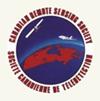一种新的基于最小二乘法的端元提取方法
IF 2
4区 地球科学
Q3 REMOTE SENSING
引用次数: 1
摘要
摘要在高光谱图像中,端元提取经常被用来检测纯地面材料的光谱独特特征。这些端元是HSI数据立方体中最纯净的像素。HSI数据立方体中的每个像素都可以表示为有限数量的端元的线性组合。在本文中,我们提出了一种利用最小二乘法提取端元的新方法。我们执行最小噪声分数来降低数据立方体的维数,通过自动目标生成过程初始化端元,根据降维的数据立方体和初始端元计算丰度图,并使用最小二乘法计算最终端元。我们提出的方法在端元提取的所有四个测试数据立方体的光谱角距离方面与现有方法相当,有时甚至优于现有方法。此外,我们的方法也相对较快,因为它只执行非常简单的操作来在测试高光谱数据立方体中找到端元。本文章由计算机程序翻译,如有差异,请以英文原文为准。
A New Endmember Extraction Method Based on Least Squares
Abstract Endmember extraction is frequently adopted to detect spectrally unique signatures of pure ground materials in hyperspectral imagery. These endmembers are the purest pixels in the HSI data cubes. Every pixel in a HSI data cube can be expressed as a linear combination of a finite number of endmembers. In this paper, we propose a novel method for endmember extraction by means of least squares. We perform minimum noise fraction to reduce the dimensionality of the data cube, initialize the endmembers by using automatic target generation process, compute the abundance map from the dimensionality reduced data cube and the initial endmembers, and calculate the final endmembers by using least squares. Our proposed method is comparable to and sometimes outperforms existing methods in term of spectral angle distance for all four testing data cubes for endmember extraction. In addition, our method is relatively fast as well because it only performs quite simple operations to find endmembers in the testing hyperspectral data cubes.
求助全文
通过发布文献求助,成功后即可免费获取论文全文。
去求助
来源期刊

Canadian Journal of Remote Sensing
REMOTE SENSING-
自引率
3.80%
发文量
40
期刊介绍:
Canadian Journal of Remote Sensing / Journal canadien de télédétection is a publication of the Canadian Aeronautics and Space Institute (CASI) and the official journal of the Canadian Remote Sensing Society (CRSS-SCT).
Canadian Journal of Remote Sensing provides a forum for the publication of scientific research and review articles. The journal publishes topics including sensor and algorithm development, image processing techniques and advances focused on a wide range of remote sensing applications including, but not restricted to; forestry and agriculture, ecology, hydrology and water resources, oceans and ice, geology, urban, atmosphere, and environmental science. Articles can cover local to global scales and can be directly relevant to the Canadian, or equally important, the international community. The international editorial board provides expertise in a wide range of remote sensing theory and applications.
 求助内容:
求助内容: 应助结果提醒方式:
应助结果提醒方式:


